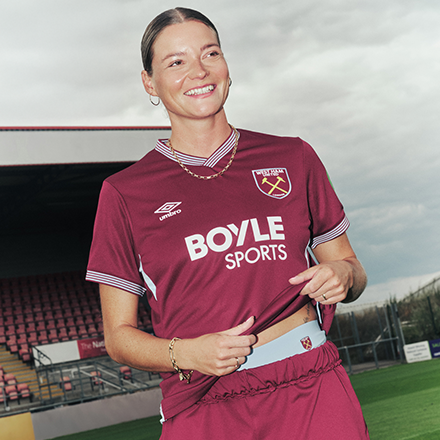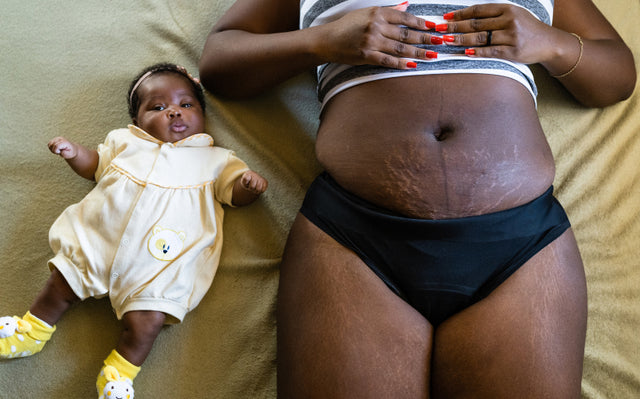...from attachment and demand feeding to engorgement, cracked nipples & ice packs.
Breastfeeding can be a joy and a bonding experience, but it takes preparation, patience, practice and the right support.
We chatted to midwife and lactation consultant Hannah Willsmore, and midwives Karen Fiebig and Holly Smith for their tips and advice on what to expect at the beginning, how to set yourself up for success, and where to seek support.
Prepare for breastfeeding...before baby is born
Hannah: Preparing for breastfeeding is huge. My best advice is to get ready in advance, while still pregnant, by learning about signs of good attachment, learning about good breastfeeding positions, normal breastfeeding behaviour and normal newborn behaviour.
So much of the work I do with new parents involves explaining to them their baby’s feeding behaviour is normal, but they didn’t expect it to be like that.
I’d also suggest you research lactation consultants in your area and save their details so you have them ready to hand if you need them, rather than struggling to find support in a hurry when you’re sleep deprived with a hungry baby.
The first few days
Karen: From days 2 to 5 after birth, your breasts may feel hot, heavy and look ‘veiny’ as they fill up with milk and you may feel a little ‘off’ as your blood pressure rises. It can take up to six weeks for your milk supply to fully establish, and it’s normal to feel uncomfortable with the size and feeling of your breasts over this period.
Hannah: A lot of women find their breasts feel hard as a rock with the increase in breast milk and volume between 24 and 72 hours after birth, but one of the best things we can do to help with this is to feed baby on demand. Babies can feed 8 to 12 times in 24 hours – and that’s the minimum – some will feed even more. Lots of feeding and skin-to-skin contact can help with breast engorgement, and if it’s too uncomfortable, then cold packs after feeds can help. If your engorgement isn’t resolving within a few days, check in with your midwife or a lactation consultant to ensure baby’s attaching well.
Holly: Don’t worry if your breasts don’t feel ‘different’ right away after your baby is born. This doesn’t indicate any issue with your milk supply and it’s normal for it to take a few days to transition from colostrum (the first milk which is ready from 37 weeks) to regular breastmilk. Women who’ve had a C-section or heavy blood loss might find their milk doesn’t come in until day four or five after birth. Rest assured, if baby is pooing, weeing and sleeping, they’re being well fed!
Around day three, babies start to cluster feed, which means they might feed every hour or more. This is perfectly normal and helps your milk supply arrive.
Getting set up at home
Hannah: We focus so much on babies in the first few weeks, but it’s important to focus on things for you too. Set up a feeding area which will make things more comfortable and relaxing for you, have some slippers handy, an audiobook you can listen to when feeding, a nursing pillow if you want to use one and contact details for a local lactation consultant in case you need advice or support.

Your nipples: the new normal
Holly: Some breastfeeding women get sore nipples when feeding, which is normal in the first few days. Keeping them moist should help, using either a little expressed breast milk before and after feeds, or a lanolin-based nipple cream. If your nipples are sore throughout the entire feed (not just on latching), or change shape when your baby has finished feeding, let your midwife know so you can have a feeding assessment.
HOT TIP: Modibodi’s new Breastfeeding Bra and Breastfeeding Cami have built-in absorbency inside the cups to absorb breast milk leaks so you don’t need to use disposable breast pads which can irritate cracked or sore nipples.


Above: Modibodi Breastfeeding Bra and Modibodi Breastfeeding Cami
When does breastfeeding get easier?
Hannah: For most people, things start to improve around six weeks because by then, you’re getting more comfortable not just with feeding but with nappy changes, bathing and getting to know your baby better, but it can take longer. Six weeks isn’t a magic number where it all just falls into place, but I’d say most people are feeling a lot better by six weeks than at the start.
I think a lot of women underestimate how much time it takes feeding and caring for a baby and then catching up on your own sleep, then throw in some visitors and trying to have a shower and it just takes up a lot of your day in those first six weeks so it’s important to plan to delegate and not be doing as many of the household chores.
This can also be a good way to get your partner or family to help with things like nappy changes, settling baby, cooking dinner, tidying up...and this is where I see many mums struggle with trying to everything which is almost impossible in the first six weeks.
One thing which contributes to making the transition to new parenting so hard is those expectations we put on ourselves of trying to do everything. I’ve heard a statistic that breastfeeding a baby in the first year is basically the equivalent of a full-time job, yet I hear from a lot of mums who feel guilty when they’re not able to cook dinner every night, or have the house tidy, or get back into exercise or even go to a café two weeks after your baby is born. I know a lot of women who wouldn’t feel comfortable feeding in comfort by then, they might have the hang of it in their feeding chair at home, but not out and about, but they feel like they should be going out by that time. My advice is to just chill out and think of the first six weeks as a time to rest, recover and get to know your baby, their little habits, what the different cries mean, and to connect as a family...and to just let the other stuff go.
Breastfeeding & weight loss
Hannah: One of the biggest myths I hear is that breastfeeding will help you get back to your pre-baby weight. Breastfeeding does use up quite a few calories, and your body works hard to make breastmilk, but I think we need to shift the focus away from trying to ‘get your body back’ and remember your body has just grown another human, so it’s going to take time, so we should drop this expectation. There’s so much to worry about in the first year after your baby is born, so don’t put pressure on yourself to lose weight while you’re breastfeeding and take it easy on yourself. There’s enough going on for your body already.

Breastfeeding a baby + managing a toddler
Hannah: If you’re breastfeeding a new baby with a toddler or young child around, it’s important to remember your older child has just gone from having you as their whole world to having to share you. Kids can be quite funny, one day they love having a new sibling and the next day they hate it so be prepared for some big emotions during this time.
Breastfeeding can be a big challenge because you’re feeding often and holding the new baby all the time and the older child wants to be held too, so they’re all over you, so it’s important to have a strategy to manage this, like spending some one-on-one time with your older child each day, like playing, drawing or bath time while your partner looks after the new baby, or when baby is sleeping - something to give them a sense that things are still normal.
When you’re actually feeding, it’s handy to have a box of toys or activities that come out especially at that time, so you can chat to your older child while they’re playing close by.
If you can, get some help with cleaning, get some meals delivered or do a big batch cook when you can to help free up a little time to spend with your ‘big’ kid as well as your new baby.
Seeking support
Hannah: Once you’re at home, if you’re struggling with feeding, or just have questions, don’t hesitate to call a lactation consultant, as they’re the professionals with the most training in breastfeeding. So many women I work with will contact me when baby is 6 or 8 weeks’ old when they’ve been struggling, and it might be a simple issue we could have gotten on top of much earlier if they’d asked for help. I find that when feeding is going well, other things tend to go a bit better too, but when feeding isn’t going well, everything else goes off track.
No lactation consultant will ever mind if you contact us to just check that things are going well, and we’re happy to share little tips which will make things easier for you.
You can also seek help from your midwife, early childhood nurse, GP or the Australian Breastfeeding Association or equivalent in your region.
NOTE: Hannah Willsmore’s advice was transcribed from her session on Tell Me Baby Live.

12 breastfeeding tips & tricks
1. See the real deal. It can be helpful to watch a friend or family member breastfeeding.
2. Set up your ‘feeding station’ with a comfy chair, a nursing pillow, a side table for water, snacks, burping cloths, your phone, a book etc. – you'll spend plenty of time here so make it your own.
3. Get help sooner rather than later, if your baby isn’t gaining weight, feeding hurts, your nipples are cracked and not recovering or your gut instinct just says something’s not right – call a lactation consultant sooner rather than later.
4. Get your partner involved. When you meet with a lactation consultant, have your partner come too if possible to help process information and remember the tips when you might be too sleep-deprived to remember them yourself!
5. Some people find babies nurse better when their feet are secure and tucked against something, whether that’s your body, the arm of your chair or a feeding pillow – give it a go, you never know!
6. To get a great latch, point your nipple towards baby’s nose so baby has to lift up its head and open wide to get a deep latch.
7. If the latch feels painful after the first few sucks, don’t feel obliged to ‘guts it out’ It’s ok to slide your finger into baby’s mouth to break the latch, re-position baby and start again.
8. It’s ok if baby only takes one breast at each feed early on. Leave baby on the first breast until he/she comes off on her/his own, then offer the second breast. Some babies will always take both, others might only take one at each feed.
9. A nursing stool helps some mothers get into a more comfortable feeding position, so give it a try if you’re struggling to find a position that works well for both of you.
10. It helps to be awake. If your baby is falling asleep on your breast, tickle the bottom of his/her feet to keep him/her awake and feeding.
11. Don’t fixate on the numbers. If your baby is feeding well, happy, healthy, meeting milestones and growing in terms of length and head circumference, consistent weight gain isn’t necessarily a problem. Ask your early childhood nurse or doctor before obsessing over the scales.
12. A breastfeeding tracking app can be a handy way to keep track of feeding (and which breast to start with), especially in those first few weeks of new baby brain fog.
Disclaimer: Please note, Modibodi’s blog content is designed for educational and/or entertainment purposes, it is not official medical or healthcare advice. Please do not rely on this information as a substitute for professional medical advice, and always consult a doctor with any questions or concerns about your health.









